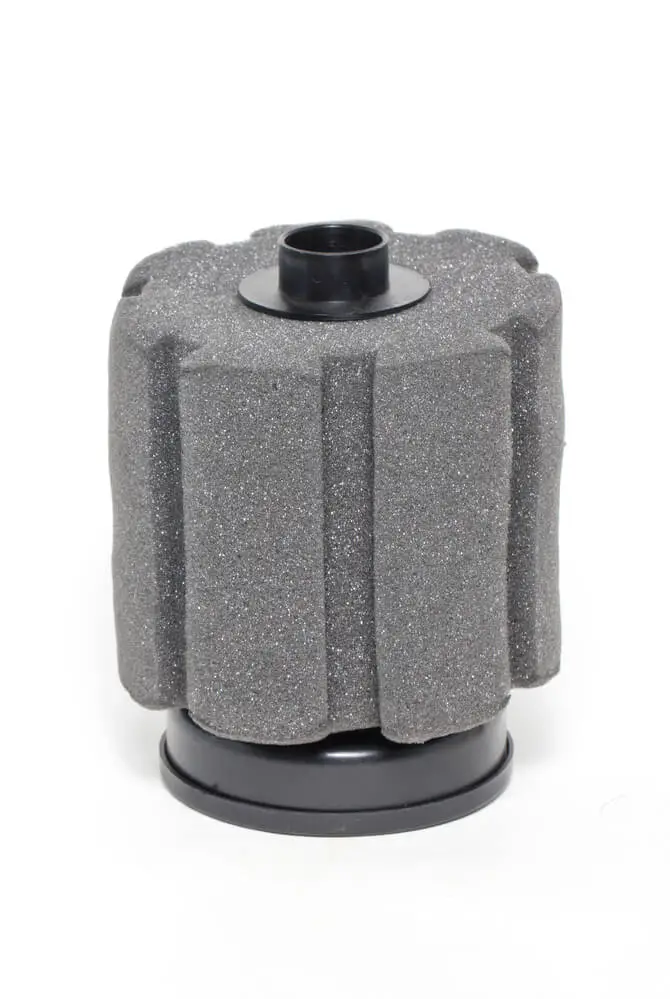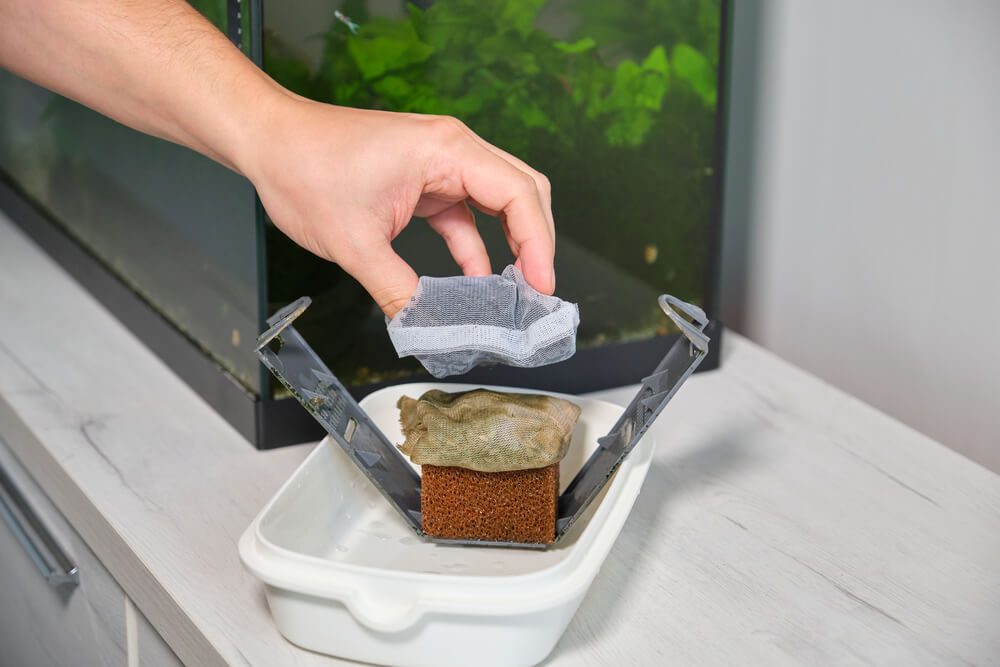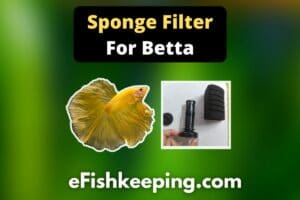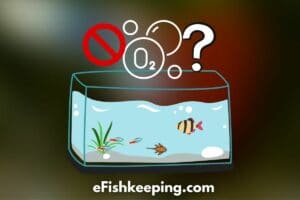Sponge filters are a popular choice for aquarium hobbyists because they are inexpensive, easy to maintain, and provide both mechanical and biological filtration for your tank.
But with all the benefits that sponge filters bring, it’s important to remember that they do require regular cleaning to ensure they continue to work efficiently.
Here’s How Often You Clean The Sponge Filter:
As a general guideline, cleaning the sponge filter once a month is recommended when performing significant water changes. However, if the sponge filter is used as a secondary filtration system in your tank, it may not need to be cleaned for a few months unless you notice a decrease in the number of bubbles produced by it.

| Sponge Filter Usage Type | Preferable Time To Clean |
| As A Primary Filter | Once A Month |
| As A Subsidiary Filter | Once Every 3-4 Months |
| As A Primary Filter In An Overcrowded Tank | Once Every 2 Weeks |
The frequency of cleaning your sponge filter depends on how you are using it in your aquarium. If the sponge filter is the only filtration system in your tank, it is generally recommended to clean it once a month.
If the sponge filter is used only as an additional filtration system in your tank, it may need to be cleaned less often, and cleaning it once every 3-4 months is generally sufficient.
On the other hand, if the sponge filter is used as the primary filtration system in an overcrowded tank or a tank where it gets clogged quickly, it may need to be cleaned more frequently, such as once every two weeks.
These are general guidelines, and the actual frequency of cleaning your sponge filter may vary based on the specific needs of your tank and the type and number of fish you have.
What Happens If You Don’t Clean Sponge Filter?
#1. Increased Ammonia Levels
The bacteria that live on the sponge filter, known as beneficial bacteria, play a crucial role in the nitrogen cycle by breaking down waste and ammonia in the water. This helps to maintain healthy water quality and prevent the build-up of toxic levels of ammonia.
If the sponge filter becomes clogged, it may reduce the surface area available for the bacteria to colonize, which can hinder their ability to break down waste and ammonia effectively.
This can lead to an accumulation of ammonia in the water and potentially toxic levels, which can be harmful to fish and other aquatic animals.
#2. Decreased Filtration
A sponge filter works by trapping debris, waste, and other contaminants in the sponge material as water flows through it.
As the sponge becomes clogged, it will become less effective at removing these substances from the water, which can lead to poor water quality and an unhealthy environment for your fish and other aquatic animals.
#3. Poor Water Circulation
A clogged sponge filter may also reduce water circulation and oxygenation in the tank, which can be harmful to fish and other aquatic animals that need a constant supply of oxygen to survive.
It’s essential to regularly clean and maintain your sponge filter to ensure it is functioning correctly and helping to maintain a healthy environment in your aquarium.
Check Out: The Best Sponge Filters For Betta Fish
How To Know It’s Time To Clean Your Sponge Filter?
There are a few signs that it may be time to clean your sponge filter:
#1. Decreased Water Flow:
If you notice that water flow through the filter is slower than usual, it may be a sign that the sponge is clogged and needs to be cleaned.
#2. Decreased Oxygenation:
If you notice that the water in your tank is not being oxygenated as well as it usually is, it could be a sign that the sponge filter is not functioning correctly and may need to be cleaned.
A common sign of decreased oxygen levels in the tank is your fish start gasping and keep swimming near the top of the tank.
Related Read: Why Do Fish Swim At The Top Of The Tank After Change?
#3. Increased Ammonia Levels:
The beneficial bacteria on the sponge filter help to break down waste and ammonia in the water. If the filter becomes clogged, it can hinder the bacteria’s ability to do their job, leading to an accumulation of ammonia in the water.
If you notice an increase in ammonia levels (by testing water parameters), it could be a sign that the sponge filter needs to be cleaned.
#4. Decreased Number Of Bubbles:
Sponge filters are known for producing bubbles, which is a sign that they are functioning properly. If you notice a decrease in the number of bubbles being made, it could be a sign that the sponge is clogged and needs to be cleaned.
#5. Visible Debris Or Dirt On The Sponge:
If you can see visible debris or dirt on the surface of the sponge, it’s a clear sign that it needs to be cleaned.
If you notice any of these signs, it’s a good idea to check your sponge filter and consider cleaning it if necessary. Regularly cleaning and maintaining your sponge filter is an essential part of keeping your aquarium healthy and happy.
How To Clean The Sponge Filter Without Harming The Beneficial Bacteria?
The best way to clean your aquarium sponge filter without disrupting the beneficial bacteria is to rinse it in the tank water.
Instead of using tap water to clean the sponge, rinse it in a small amount of water from your tank. This will help to preserve the beneficial bacteria on the sponge.
Tap water can potentially kill beneficial bacteria in an aquarium.
Tap water typically contains chlorine or chloramine, which are chemicals used to disinfect the water and kill harmful bacteria.
While these chemicals are safe for human consumption, they can be toxic to fish and other aquatic animals, and they can also kill the beneficial bacteria that live in an aquarium.
Therefore, use only the aquarium water while cleaning the sponge filter. By following this tip, you can effectively clean your aquarium sponge filter without disrupting the beneficial bacteria that are vital for maintaining a healthy tank environment.
Related Read: Why Do Fish Hide Behind The Filter?
Is It Necessary To Replace Sponge Filters?
Generally, it is only necessary to replace sponge filters if they are damaged or have become too clogged to function effectively.
The lifespan of a sponge filter will depend on how much it has been used. In general, sponge filters can last for a long time if they are properly maintained and cleaned on a regular basis.
If you do need to replace a sponge filter, it is generally recommended to do so gradually to minimize the impact on the nitrogen cycle in your tank.
You can do this by introducing the new sponge filter alongside the old one, and gradually reducing the use of the old sponge filter over the course of a few weeks.
This will allow the beneficial bacteria on the new sponge filter to establish themselves in the tank and help to maintain the stability of the nitrogen cycle.
So usually, it is not necessary to replace sponge filters on a regular basis, but if you do need to replace one, it is essential to do so gradually to minimize the impact on the nitrogen cycle in your tank.
Related Read: How Long Can Fish Survive Without Filter?
Wrapping Up
In short, you should clean your sponge filter once a month during major water changes. If it’s a secondary filtration system, cleaning it every 3-4 months is also fine. If it’s a primary filter in an overcrowded tank, clean it every two weeks to maintain its efficiency.
By regularly cleaning and maintaining your sponge filter, you can ensure that it is functioning properly and helping to maintain good water quality in your tank.
Keeping your sponge filter clean and well-maintained, you’ll help keep your fish and other aquatic animals healthy and happy.
Regularly monitoring the performance of your sponge filter will also ensure it’s an effective and reliable part of your aquarium filtration system.
Hi! I’m Praveen Ghoshal, the founder of eFishkeeping.com. Inspired by my Dad, I got interested in fishkeeping when I was a kid. Since then, I have been involved with this hobby. Currently, I have 3 fish tanks at our home, and I enjoy this hobby with my full family. Read more about me here.








